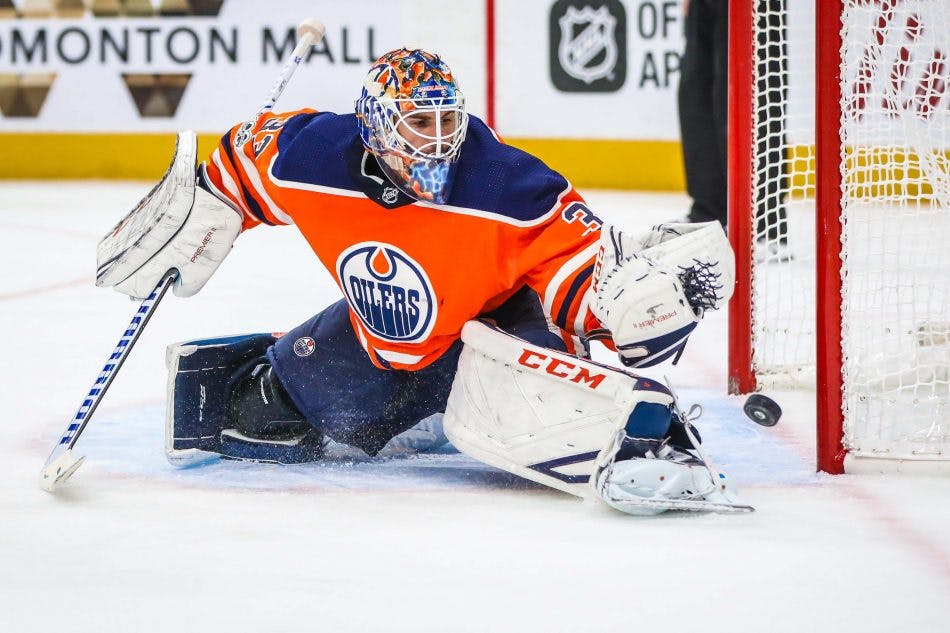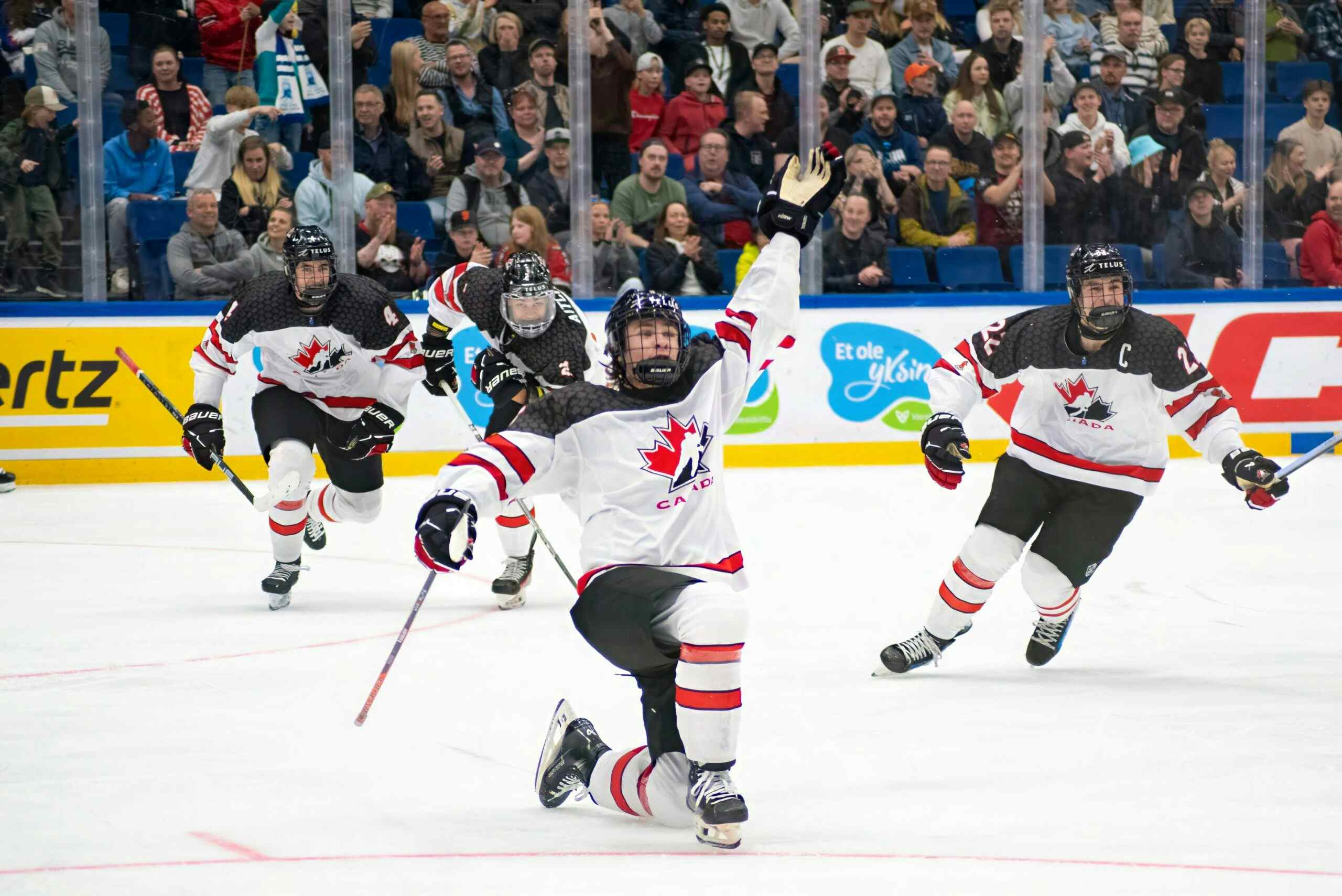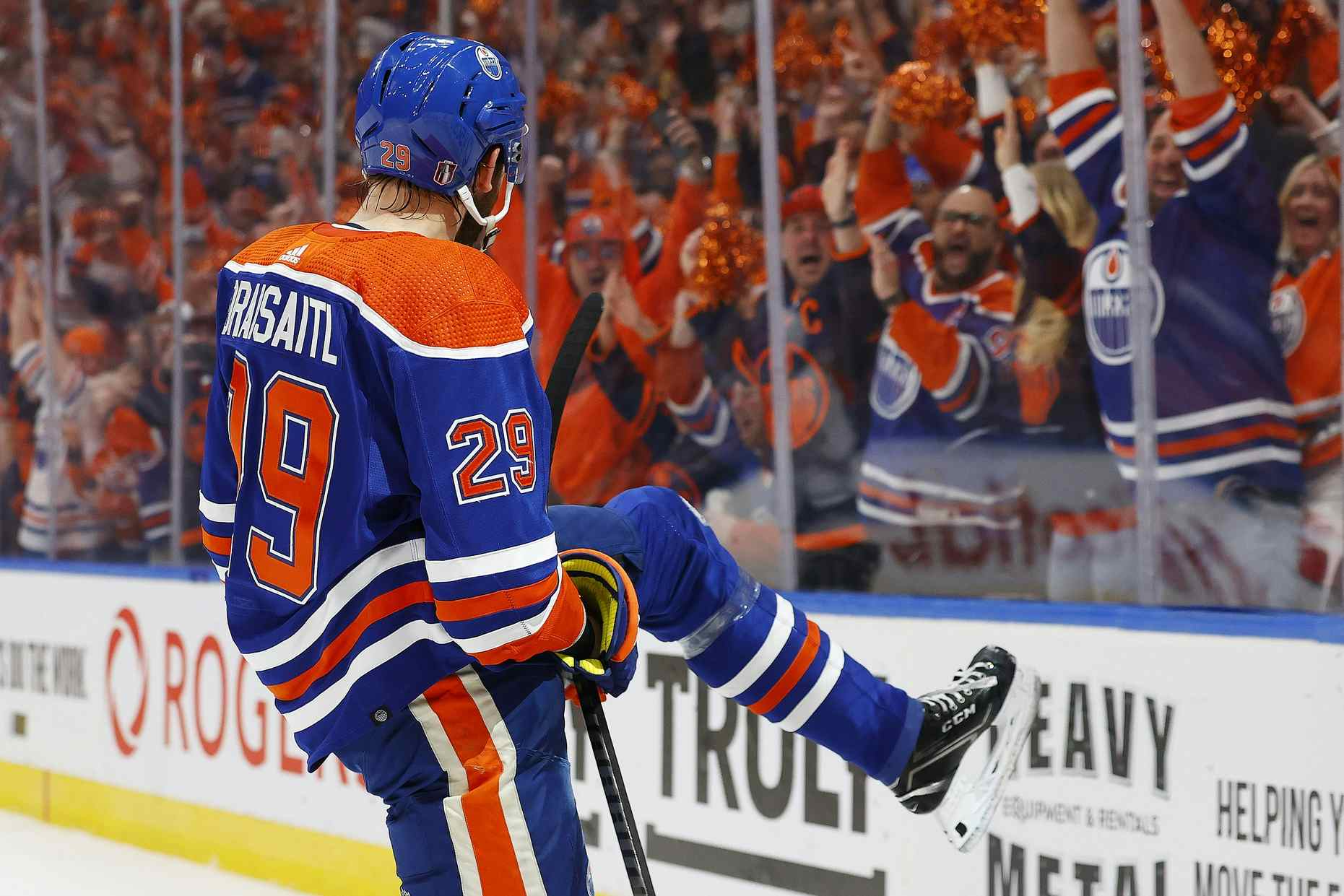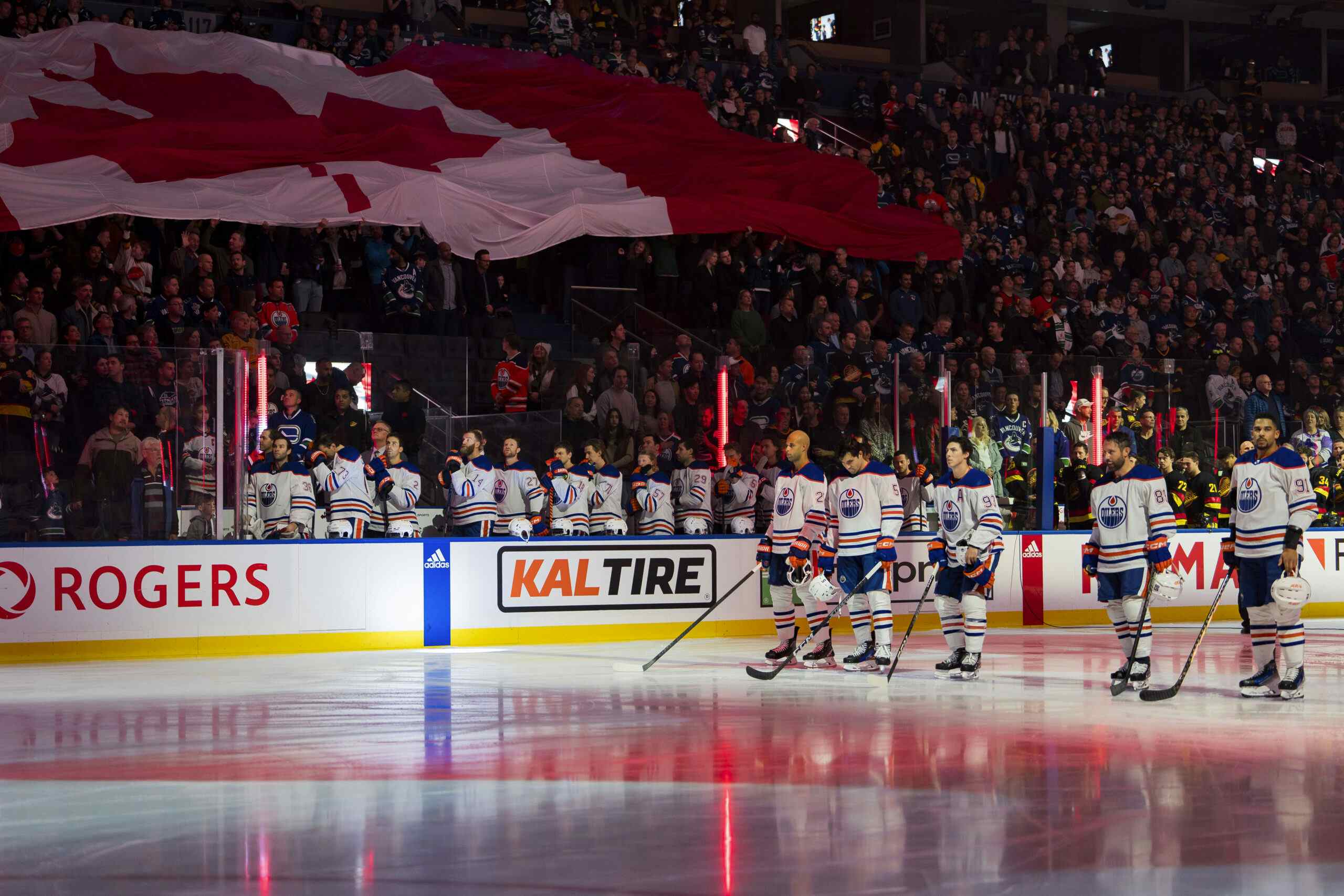Quick fixes: Tightening up Cam Talbot’s biggest issue

So far, it hasn’t been Cam Talbot’s year.
After putting up impressive numbers in the 2016-17 season — despite playing behind a suboptimal defense and almost never getting a game off — he’s fallen back to earth, and fallen hard.
Through six games played, he’s gone 2-4-0. He boasts a .903 save percentage — and that’s including his one shutout — and has allowed 15 goals on 155 shots so far.
He’s not in Antti Niemi territory (for comparison, Niemi was waived on Monday with 16 goals on 79 shots and counting), but he certainly isn’t doing well. For every quality start he makes, he’s got a stinker that blows his save percentage, and he’s been unable to bring that consistency level closer to something acceptable.
So what, exactly, has gone wrong so far?
FOR STARTERS, COUNTERROTATION.
One of the quickest flaws to identify in a goaltender’s game is counterrotation.
When a goaltender needs to move across the crease, there’s usually an element of speed necessary — and one of the easiest ways to ensure you won’t get where you need to be, squared to the shot, is to counterrotate. It’s the concept of leaving a goaltender’s torso facing where he’s coming from, creating resistance in his movement and delaying his ability to set for the shot.
Without digging too deeply into every goal he’s allowed (or been bailed out on) this season, here are two immediate examples where he counterrotated and cost himself a goal:
1. Goal scored by Brandon Sutter, EDM v. VAN (10.7.17)

For the purposes of this exercise, we’re going to completely ignore everything about Kris Russell (who, you’ll notice as this article goes on, tends to be Not Preventing A Goal™ in a lot of these examples).
Take a look at where Brandon Sutter scores the goal, and take a look at where Cam Talbot is facing when the puck is in the net.
His torso turned to follow Sutter as he moved to Talbot’s right after firing the shot, instead of following the puck with his eyes. Not only does he lose sight of the puck by doing this — meaning his save is, essentially, positional guesswork — but he starts to turn himself away from what ends up being a left-side goal.
I do a lot of work on Corey Crawford for The Athletic Chicago. I won’t bore you with a long rundown of his play as a whole, but I will point this out — if you watch Crawford play night after night, you’ll almost never see him follow the skater with his eyes instead of the puck. Even when he allows a rebound off his left pad, his mask follows that puck straight to where he stops it, and then back out again to whatever stick it ultimately lands on. You’ll find him positionally lacking sometimes, but you’ll almost never find him doing this; for Talbot, that’s a huge error on his part.
2. Goal scored by Mark Scheifele, EDM v. WIN (10.9.17)
I’ve broken this one down into two parts:

To start, we need to acknowledge that Edmonton’s defense still… isn’t exactly where it should be.
Every Edmonton player on the ice is in or around the left faceoff dot, while Winnipeg’s Mark Scheifele is basically standing right in the slot to the right of them all.
At this point, Scheifele is kind of screening Talbot, who is doing a pretty nice job of directly facing the puck — to give him some credit. But once Scheifele gets the puck and starts to corral it, that’s where things start to fall apart:

As you can see, Talbot is preparing to push to the right, hoping to get across the crease. But he’s still very much pointing his torso almost exactly where he was when he was being screened, slowing him down and preventing his hips from fully opening and covering maximum net space. He gets scored on, which is hardly a surprise, on his right side.
Even if you want to argue that the player in front of him should have cleared that puck, a goaltender only has control over one player on the ice — himself.
That’s where the problem is coming in with this bit of a technical collapse. Sure, in a perfect world, this play gets intercepted before it ever actually happens, but in reality, it’s Scheifele versus Talbot. The ‘goaltender versus everyone’ mindset can help a starter avoid unfortunate goals when his defense is of no help, and counterrotation can ultimately hurt this endeavour to ‘carry’ one’s team.
Are there other issues he needs to fix? Sure. While he hasn’t altered his depth much to start the season, the little parts of his game that allow him to play deeply (and limit his movement) have been lacking, and counterrotation is just one part of that.
If he can, at the very least, shut that inconsistency down, things should immediately get better.
How can he fix this?
The biggest thing that he needs to adjust is what he’s tracking.
On the first goal used as an example, Talbot tracks Brandon Sutter, instead of the puck, meaning that even though he’s headed in the right direction to stop the shot, his torso turns away and pulls him back from actually making the save.
He did it again in the Winnipeg game, albeit not on the goal scored by Scheifele. Take a look at this shot:
Talbot doesn’t necessarily turn his body away from this goal; he doesn’t retreat too quickly, and he doesn’t seem to do anything but get beat high blocker-side.
A goaltender should have to use his glove and blocker as infrequently as possible when he makes saves, though. As someone who routinely makes minute adjustments in his crease (as opposed to the sprawling, acrobatic pinwheels seen by guys like Jonathan Quick and Ben Bishop), Talbot should have been able to move in front of this shot with relative ease.
Instead, he watches Ehlers — not the puck — until it’s whizzing past his shoulder. Take a look at the screen cap:

By the time the puck is close enough to render any additional movement a Hail Mary, Talbot is still focused on Ehlers to the left.
It’s possible, as the announcers suggested in-game, that Talbot assumed the puck was going wide, and didn’t want to overcommit to something he wasn’t going to stop anyway.
If that’s the case, though, that’s a very poor read on the puck’s trajectory which, if he continues to play like that, will be the cause of more than a few frustrating goals as the year goes on.
He’s started to pick his game up a bit, so this could all just be summer rust. After all, even the Great Carey Price is off to a horrifically slow start this year.
His problems certainly haven’t been random, though. Hopefully, knowing that, his ability to fix it won’t be too far from reach.
Recent articles from Cat Silverman





